PC Game
Empower Your Business With Our Expert PC Game Development Company
Our company creates performance-driven PC games which combine stunning visuals and deep immersion to engage players through ambitious technology achievements.

12+
Years of Expertise
50+
Projects Completed
10M+
Game Downloads

Our End-to-End PC Game Development Services
Our team combines developers, designers and strategists to provide quality PC game development according to modern industry requirements.
Custom PC Game Development
Our company designs PC games according to specific audience visual wants by creating gameplay graphics that match their preferences.

PC Game Design & UX Optimization
Our designers endorse captivating gameplay by developing visuals that augment ease-of-use interface controls.

Multiplayer & Online Game Development
We develop network-compatible massive multiplayer games that combine social connections and companion capabilities for direct compatibility.
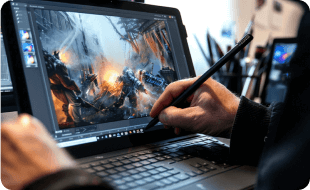
Cross-Platform & Cloud Gaming Solutions
Our video games function optimally both on all PC platforms and cloud streaming options.
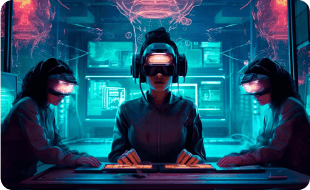
Game LiveOps & Post-Launch Support
The user engagement strategy delivers fresh content alongside seasonal special events and active performance tracking systems.

Game Testing & Quality Assurance
Through our rigorous testing approach, the system would function flawlessly no matter what combination of PC hardware and operating systems customers use.

PC Game Porting & Optimization
Our team excels at translating games to different platforms. We enhance the graphics quality while boosting frame rate and game dynamics.

AI-Powered NPC & Character Development
Artificial intelligence creates life-like dialogues and artificial non-player characters along with behavior optimization.

Advanced 3D Rendering & Physics Simulation
Our work focuses on improving 3D modeling techniques and rendering processes and developing realistic gaming environments, which require detailed physics simulations for all gaming applications.
The PC Gaming Advantage
Unlocking the Future of PC Game Development
Do you know what the future holds for PC game development? PC game development follows an optimistic path to give creators options for delivering exciting and visually spectacular gaming experiences to their players. The global video game market size is expected to grow at a compound annual growth rate (CAGR) of 13.4% from 2023 to 2030. The video gaming industry remains innovative because of improvements in game engines alongside sophisticated AI game mechanics and real-time graphical capabilities.








Key Stages In The PC Game Development Process
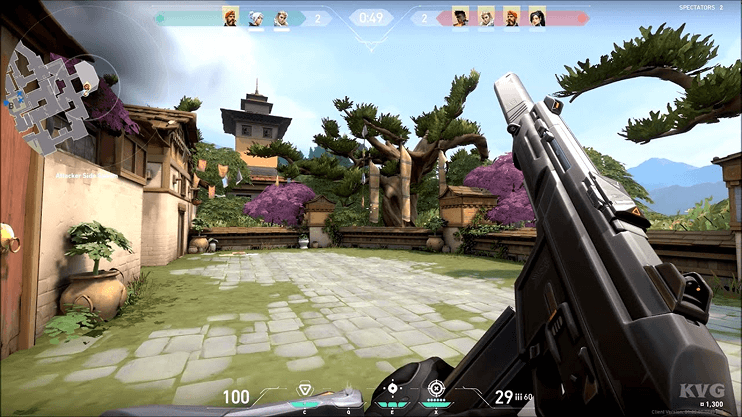

Take Your PC Game to the Next Level!
Our PC game development services enhance both visual presentation and computational processing efficiency in addition to interactive gameplay experiences with your game world. According to recent data, there were 11.1 million game developers as of Q1 2024, and this figure will continue to grow. Let us help.
Get Started

Getting Started with PC Game Development

What is PC game development and why is it important?
Creating video games for personal computers makes up the core activities of PC game development. Game development stands as a demanding practice which demands no less than game concepting and designing together with programming and graphics and audio and multimedia production and substantial testing. PC developers integrate three exciting features including multiplayer capabilities and artificial intelligence gameplay and physics components during development. The combination of maximum entertainment value with personal computer technology utilization represents the development goal.
With a vast global audience, now more than ever, they play a critical role in aligning a game with the preferences of over 3 billion players worldwide. Various factors demonstrate why the development of PC games matters to the industry. Textual content and electronic data storage capabilities as well as processing speed are greater on personal computers than they are on gaming consoles or mobile devices. Through this capability developers can improve all aspects of their game including mechanics and visuals while creating extensive virtual worlds. Additions of strong graphics cards enable the platform to produce results which outshine other platforms to create spectacular visual experiences.
What tools are commonly used in PC game development?
PC game development needs multiple advanced instruments to complete the execution and enhancement of the entire gaming performance. Success in PC game development relies on six principal tools which include:
- Game Engines (Unity, Unreal Engine, Godot)
- Programming Languages (C++, C#, Python)
- 3D Modeling and Animation Software (Blender, Maya, 3ds Max)
- Audio Design Software (Audacity, Pro Tools, FMOD)
- Version Control Systems (Git, Perforce)
- Project Management Tools (Trello, JIRA, Asana)
Game engines like Unity, Unreal Engine, and Godot serve as the foundation for game creation. The game development industry favors Unity for both 2D and 3D games though Unreal Engine excels when it comes to game graphics. Open-source software Godot remains adaptable by offering small studios or developers who have particular requirements a perfect solution.
When building integrated software the base platform establishes the needed programming language selection. Performance-based games and other games run primarily on C++ which serves as the second language especially when using the Unreal Engine. The development of gameplay through Unity requires C# programming because Unity implements its primary language as C#.
Players need to work with Blender alongside Autodesk Maya and 3ds Max to create 3D assets as well as animations and environments. The game implementation utilizes character and environment models collectively with animated character models designed for the game engine.
Audio plays a crucial role in creating the feeling of immersion within virtual game spaces. The audio design applications Audacity and Pro Tool provide capabilities to record and improve the various sounds featured in films including effects noises and recorded voices. The game audio interactivity increases through semiotic audio solutions Wwise and FMOD.
A team developing a game would benefit from using Git and Perforce systems for version control purposes. These systems provide teams with the capability to track all game source code modifications and allow programming teams to merge their work safely without accidental data loss.
Project management tools such as Trello JIRA Asana along with their equivalent software need to be used to follow project progress and document tasks and minute project details. The tools facilitate development team organization and project management routing effectiveness by monitoring bugs along with features and following project progress
How can I improve the performance of my PC game?
The most vital step in handling a PC game involves optimization work to achieve better results and an improved gaming experience. The existence of performance bugs including low frame rates combined with long load times and game crashes makes the game unplayable and requires significant effort for fixing while simultaneously risking the game's market success. The following methods will help optimize your PC game for enhanced performance:
- Optimize Asset Loading and Management
- Reduce Draw Calls and Use Batching
- Use Level of Detail (LOD) Techniques
- Optimize Game Physics and AI
- Leverage Multithreading
- Optimize Memory Usage
- Optimize Rendering Pipelines
The biggest optimization factor originates from proper asset transitions because they determine how a game handles textures and models and their accompanying sounds. The implementation of asset streaming provides multiple crucial advantages to users. Asset management becomes possible through this method when it loads required assets selectively according to each given moment into memory. The optimization process should focus on assets to ensure low-end hardware compatibility without sacrificing quality.
Draw calls are the number of times the game needs to send data to the GPU for rendering. High draw calls can slow down performance, especially in graphically intensive scenes. To reduce the number of draw calls, use techniques like static batching and dynamic batching to group similar objects together. Combining meshes and minimizing unnecessary details in the background can significantly improve performance.
The game utilizes LOD technology to operate with easier models while the player maintains a distance from camera view. The display of reduced information at a distance improves the engine frame rate and overall performance. Applications drawing distant elements such as buildings and trees do not require real-time calculation of their facets and polygons as it is an unnecessary step.
The computational demands of physics simulations coupled with AI algorithms usually consume high processing power. Reaching better performance could be achieved through slower physics updates or easier system detection for collisions. The solution to AI-related CPU usage problems can potentially be achieved by implementing improved pathfinding algorithms alongside simplified AI behavior patterns.
A game benefits greatly from multithreading since it distributes execution processes to multiple simultaneous threads. The power of CPU threads permits assignment allocation of physics calculations together with AI logic and assets loading procedures across multiple threads. Many game engines such as Unity and Unreal Engine currently utilize multithreading as their optimization technique.
Effective memory management serves as an essential factor for achieving system operational efficiency. The failure to free allocated memory results in a memory leak situation that eventually produces game crashes or slow performance degradation. Programs that track memory allocation and support detection of leaks must be used to analyze and diagnose memory usage problems.
The implementation of object pooling prevents memory allocation and deallocation for objects when they are used instead they get recycled through redistribution. The game benefits from this technique when processing enemy characters as well as bullets and short-lived game elements.
The game uses a rendering pipeline for the generation of all visual content throughout the game frames. The enhancement of game appearance becomes possible with no need to compromise the game's operational performance. Performance benefits from GPU workload offloading through camera-visible object hiding techniques referred to as occlusion culling and shadow culling algorithms together with shader quality reduction for remote objects.
How much does it cost to develop a PC game?
The final expense for PC game development depends on multiple factors including game design difficulty levels and complexity together with the number of developers working on the game and their selection of development tools. Indie games usually require between thousand and hundred thousand dollars while AAA games demand expenses in the millions.
The level of difficulty in game development serves as the primary factor that determines several game development expenses. Game development expenses for basic 2D titles are more affordable because they need simplified gameplay yet advanced 3D titles requiring features like AI and physical modeling and multiplayer become costlier. Complex game requirements demand higher numbers of developers together with designers and artists resulting in higher development costs.
The team size stands as an essential element which determines how costs are structured within a team. The reduced expenses between indie developers allow their teams to remain small in comparison with large game development companies.
Game studios comprising many tens or hundreds of specialists including programmers, artists and authors as well as sound designers expect to incur substantial development expenses. A lengthy project development period results in higher development expenses because it extends the time needed for production. Game development periods that extend over substantial lengths increase employment expenses and technological requirements and purchase costs of equipment thus resulting in higher overall costs.
The total cost to build a PC game requires consideration of game difficulty level along with staff count and time needed for game development and promotional spending. The development of indie games costs $10,000 to $100,000 for small productions yet reaches into the millions for extensive game projects.
What are the hidden costs in PC game development?
Standard and visible costs within PC game development are clear to see but multiple hidden expenses can arise unexpectedly during the process. The costs increase which directly affects the budget amounts. The development process includes various missed expenses which remain unnoticed. So, what are the hidden costs in PC game development? The following are some of them:
- Software Licenses and Tools
- Outsourcing and Freelancers
- Testing and Quality Assurance
- Marketing and Promotion
Game development depends on multiple frequently used assets consisting of Unity and Unreal Engine alongside 3D and graphic designing modeling platforms. Tools regarding software development come in two types: freely downloadable options with freeware licenses but other market-available tools need licensing payments.
Large development teams especially encounter major costs during project development. Among the high-end 3D applications like Maya or Autodesk developers must pay annual expenses ranging from multiple thousand dollars up.
Companies handle most of their development processes within their internal departments although some tasks including sound design and music creation and extra graphic work could be expensive to outsource. The expense of outsourcing your challenging work to freelancers or external contractors becomes quite high. The necessity of specialized knowledge expertise for your game will drive you toward essential outsourcing yet this decision will significantly increase costs.
Debugging software and showing glitches and performance-related problems becomes possible through a testing phase. The total cost of testing a complete game becomes apparent only after developers finish designing and developing the product across various platforms and system types and multiple screen sizes. Testing operates as a crucial functionality which can be conducted by QA teams but also by beta-testers along with focus groups thus increasing project expenses.
People generally pay insufficient attention to development marketing activities. Even if a game represents high-quality design the lack of well-made advertising will prevent players from taking notice of it.
A strategic marketing approach consists of social media promotion, public relations management, content-based advertising campaigns and forming partnerships and implementing promotional advertisements. Specialized teams manage such activities and implementing these tasks uses up more budget resources than initially projected.
FAQ
Answers to the most frequent question.

Ready to Bring Your Game Idea to Life?
Let StrikeOneStudios turn your vision into an immersive gaming experience with our expert development services. Contact us today to get started!









